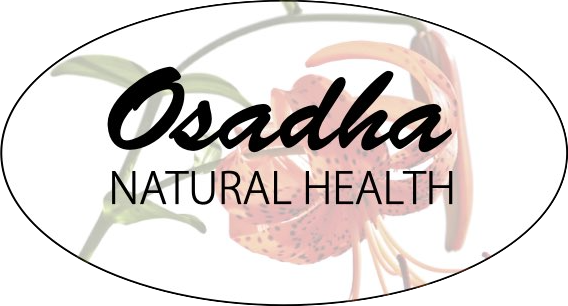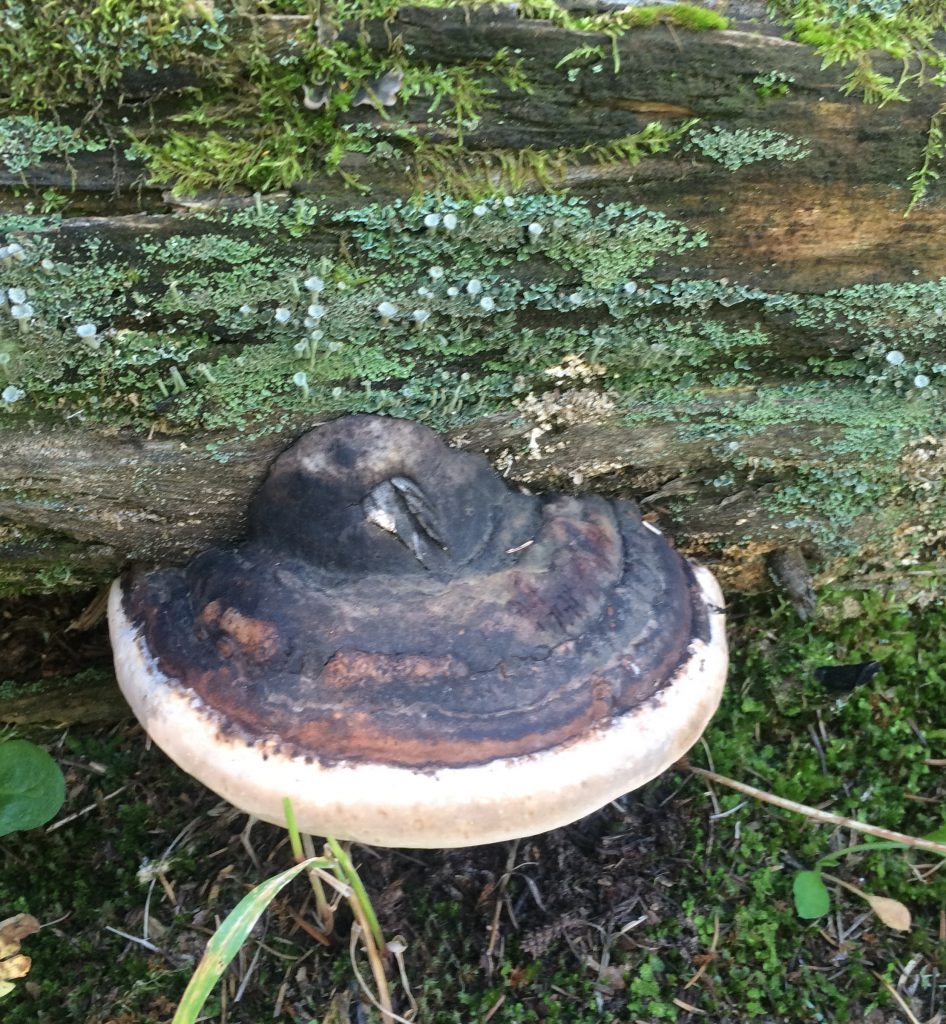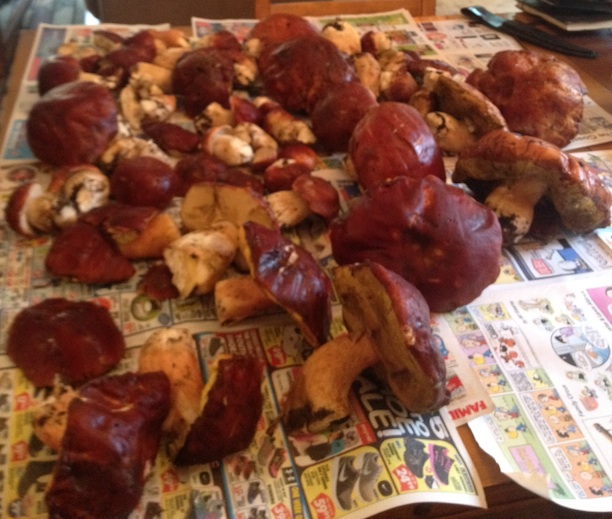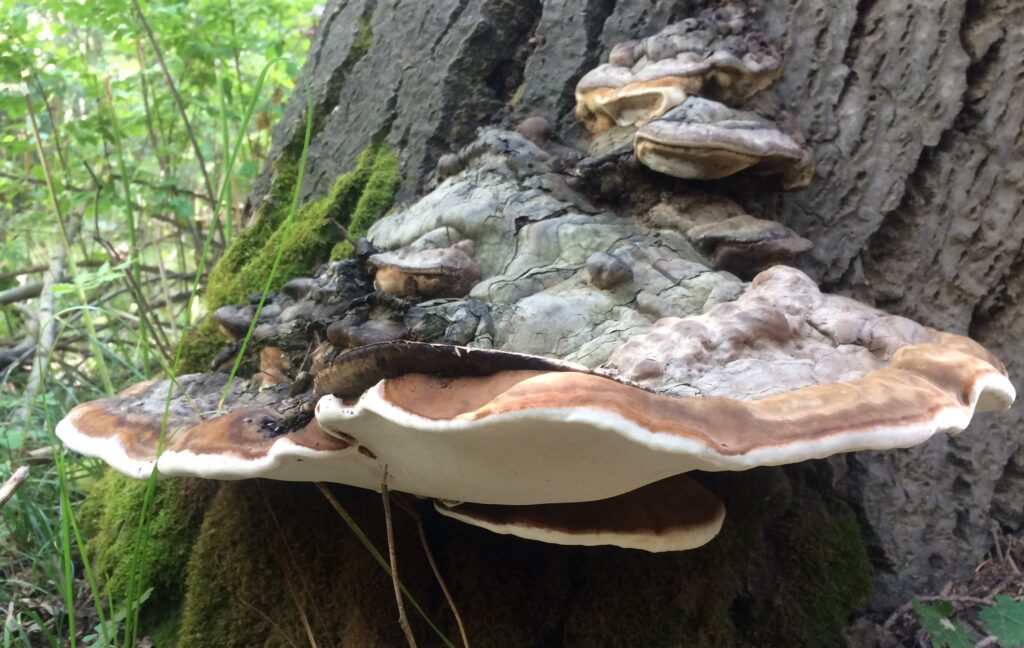Any of you who’ve stuck your nose up to a mushroom know that they are aromatic. Even if they just smell like “mushroom”, which, by the way, is largely due to the chemical octanol and its relatives. Some mushrooms smell wonderful (fresh Oyster Mushrooms in the forest); others, not so much (Stinkhorn!).
Mushroom volatile chemicals have been less sussed out than those of plants. “Volatile” simply means that a molecule evaporates readily at ambient temperature. Anyway, there are over 100,000 described fungal species. Aromatics have been assessed in maybe 100 of these (1), and, not all of these are fungi of the “mushroom” persuasion. Most of the info on mushroom aroma comes from work done by ecologists studying interactions among species and by folks in the food or perfume industry.
Mushroom volatiles fall into the chemical categories that you aromatherapists will recognize from plants. (Nature doesn’t often reinvent the wheel.) These include hydrocarbons, terpenes, ketones, acids, aldehydes, alcohols, esters, hetero-cycles, nitrogen-containing compounds thiols (sulfur-containing…stinky!) and aromatics (confusingly, referring to chemical structure rather than scent)(1). We’re inhaling these in while walking in the woods, and also when stuck inside a musty, old building.
And, not all mushroom odors are actually made by the mushroom. Some, instead, come from other fungi or even bacteria living on or in the shroom. Truffles are prized for their distinctive scent, but the bacteria that hitchhike along with Truffles should get a big part of the credit (1). Others mushroom aromatics come from the substrate that the mushroom is “eating” (1).
Why do mushrooms have an aroma?
For the same reasons plants do: Growth, development, reproduction, competition and protection. Some mushroom aromatics may regulate if and when a mushroom sporulates. Others may protect the fruiting body from being eaten, or may lure in “pollinators” to spread the mushroom spores. Many mushroom volatile compounds are anti-microbial, protecting from infection by bacteria, protists and other fungi.
Mushrooms also communicate with other fungi, along with bacteria and plants, using their volatile messengers. The volatiles may be telling these other organisms to piss off or to come hither. Or, might tell them something along the lines of “Holy shit, some asshole is digging up the forest…protect yourselves!”. Mushroom aromatics may stimulate plant growth, which is useful if that plant is the mushroom’s host. Other mushroom aromatics may inhibit plant growth, which may be useful if that particular plant competes with the mushroom’s host plant.
Volatile chemicals produced by fungi (and bacteria) in the soil can carry out communication long distance by traveling through air pockets in the soil. Tiny amounts of these so-called “semiochemicals” are enough to deliver the message.
Do mushroom aromas influence us?
Oh yes. Ever heard of “forest bathing”? Known as Shinrin-yoku in Japan, forest bathing is an therapy that entails getting thine ass out into nature. The purpose is to appreciate the beauty while doing a little forest aromatherapy. Both of these result in multiple health benefits. Tree aromatics get all the attention, but fungal aromatics are there, too. That rich, earthy, fungusy scent you’ve probably smelled in the woods comes, indeed, from fungi. One of the most prevalent mushroom volatiles, 1-octen-3-ol (aka. the aforementioned octenol), is sedating and may contribute to the stress relief of walking in the woods.
Then, of course, there are the wonderful scents when cooking after a good forage. Though heating mushrooms alters many of their aromatic chemicals, they still smell damned good! Boletes roasting in the oven. Chanterelles sauteeing on the stove. Truffle oil… (OK, I’ve never and never will find a Truffle.)
Mushroom aromatics are being investigated as anti-bacterial agents, given the distressing and rapid rise in multidrug resistance in pathogenic bacteria. They also have application in food safety as a way to avoid synthetic food preservatives. Other mushroom aromatics support the respiratory system, and some have anti-cancer activity (in a dish, at least…).
Not all aromatics produce by fungi are good for us. An example is the phenomenon of “sick building syndrome” — a collection of symptoms such as skin irritation, respiratory distress, fatigue and other fun ones — may be linked in part to fungal volatiles (1).
——————————————————
Mushroom Perfume?!
Why not? The scent of mushrooms goes well beyond “mushroomy”. If you spend time in nature, you may have encountered Oyster or Horse Mushrooms with their lovely almondy/aniseed scent. (I’ve yet to find Oysters in the grocery store or from a kit with this scent…growing conditions are important.) You Pacific Northwesterners may know the spicy, pungent scent of Matsutake, which has been described by mushroom expert, David Arora, as a “provocative compromise between red hots and dirty socks”. Chanterelle aficionados are familiar with the mushroom’s apricot-like scent, whether stumbling across them in the Doug Fir forests of the PNW or finding them them half hidden under rocks in the Southern Rockies.
The scent of mushrooms varies wildly and many have distinctively un-mushroomy scents. For example: Grapefruit and anise (Honey Mushroom); jasmine, rose and fruit (Inocybe species); orange blossom (Flowery Blewit); burnt toffee (Trembling Merulius); pineapple, apples and coffee (Birch Polypore); fruity, banana (Bleeding Broadleaf Crust); and, not to be left out, fish and tallow (Turkey Tails)(2).
Many volatile chemicals from fungi are used in perfumery. It’s less common for mushroom distillations or other mushroom extracts to be used in perfumery, though some are out there. You’ll get to smell some mushroom hydrosols and blends in this class. In the mean time, check out natural perfumer Mandy Aftelier’s Cepes (Boletus edulis) and Tuberose. There’s even a (patented) Bolete essential oil (3). Bolete is a base note (LINK: https://basmati.com/2017/11/09/essential-oil-essentials-making-natural-perfume-simply): A heavy note that grounds a blend and gives it some heft. The larger molecular size of base notes slows the evaporation of smaller scent molecules in a perfume blend, making the perfume last longer. The middle notes, of intermediate size, round out a perfume blend.
OK, back to mushrooms. Quite a few shrooms are rich in top notes, those small scent molecules that evaporate the quickest. Take the most ubiquitous mushroom aromatic, octenol. I assumed that a mushroomy aromatic such as this would be a base note. Nope. Small molecule. Top note.
Compared to aromatic plants such as Rosemary, Lavender, Pine and such, mushrooms don’t produce nearly the level of volatile oils. I’ve not been able to isolate mushroom essential oils either with my janky stove-top pot-with-upside-down-lid setup or with my microwave distiller. So I’ve been making hydrosols and infused oils. We had a non-existent mushroom season in 2018 (after I proposed this class, of course), so I didn’t get to play as many wild mushrooms as I wanted. Though there were conks, of course. You’ll get to smell some mushroom (mostly conk) hydrosols and blends in this class.
Here are some of the most prevalent mushroom aromatics
C8 Compounds
The most common mushroom aromatics are aliphatic eight-carbon (“C8”) compounds. Aliphatic means that the carbons form a chain rather than a ring stucture. They’re linoleic acid breakdown products (1) found in essentially every mushroom tested, as far as I can tell. C8s are very prevalent in the common grocery store Button Mushroom (Agaricus bisporus), making up from 44 to over 90% of the aromatic molecules (4). This relatively “boring” mushroom actually has over 150 different scent molecules, by the way (4).
A very prevalent C8 aromatic is the aforementioned octenol, which contributes significantly to mushroom scent and flavor. In addition to mushroomy, the scent of octenol has been described as lavender-like, herbal, bright, earthy, buttery, resinous, vegetable and hay-like (2, 5). You’ll get to decide for yourself in the Mushromatherapy class in May. Why such a wide range of descriptors? Because, molecularly-speaking, octenol has 2 different configurations that result in different scents.
Octenol has a role in mushroom metabolism and sporulation. It’s also anti-bacterial and anti-fungal (4), protecting the fruiting body from infection by unwanted critters. The scent can act as either an insect repellent or attractant depending on the bug (1). This may serve either to protect the fruiting body from being nibbled on by insects or, instead, to lure in a 6-legged carrier to help spread the mushroom spores afar. (Mushroom pollinators, as it were.) Mosquitoes are one of the insects that octenol attracts. So, if you find yourself in a campground and there’s a noisy, annoying group there as well, sneak over and spray their camp site with octenol.
Octenol was sedating in rodent studies (6). Accordingly, there’s a post on the outstanding mushroom blog Reishi and Roses that describes how ridiculously sedating the aroma of Artist’s Conk was during distillation (7). Octenol is is one of the major aromatics of Artist’s Conk (8).
Aside from mushrooms, octenol is also found in basil, spearmint, thyme, elder flowers, dill, hyssop, lavender, marjoram, oregano, rosemary, sage, lemon balm and others. Lots of mints on the list. I wonder if any of the relaxing quality of mints is related to octanol… Pumpkins, bananas, black currants and raspberries also contain octenol (5). And, weirdly enough, octenol’s in our breath, too. Who knew?
A related and even mushroomier-smelling C8 is 1-octen-3-one; and there are a slew of other C8s with scents ranging from mushroomy, buttery, nutty, fatty or metallic to floral, lavender-like, sweet, green or vegetable-like (9-10).
Hexanal
This is the same as “1-hexanal”.
Hexanal is a major volatile component in King Boletes (12), and also lends it’s scent to those aromatic lovelies Chanterelles (13), Matsutake (14) and Oyster Mushrooms (15). Hexanal is also an aromatic in Button and Meadow Mushrooms (16).
This linoleic acid derivative and aldehyde is a yummy top note with a scent described as woody, citrusy, green, fresh, grassy, apple-like and vegetable-like (5). Again, you’ll get to offer your own 2 cents on this one at the conference. “Apple-like” isn’t too much of a stretch, given that hexanal’s found in apples. It’s in many other fruits and veggies, too: Bananas, coconuts, carrots, avocados, cucumbers and a whole passel of citruses (5). Like benzaldehyde, hexanal is a popular natural flavor in the food industry and is also used to flavor rum (5).
Hexanal is also an essential oil component of herbs including parsley, oregano, bay laurel, angelica seed, clove, cayenne, oregano and spearmint. Coffee and tobacco have it, too (5). It’s a major contributor to the green odor of leaves (17).
Hexanal inhibits plant seed germination and pollination of several plant species (18), making me wonder if some mycorrhizal mushrooms use it to inhibit competitors of their plant hosts.
Hexanal is active against nasty pathogenic bacteria such as E. coli, Salmonella and Listeria (19) and is also anti-fungal (20) and anti-viral (21). On another note, hexanal is emitted by bed bugs when they’re doing it (22).
Hexanal is detected in the breath of folks with Multiple Sclerosis and is this is being explored as a possible detection/diagnostic test (23). Lipid peroxidation is involved in neurodegenerative diseases, and hexanal is an end product of lipid peroxidation; perhaps a reason it’s detectable in the breath of those with Multiple Sclerosis (23).
Hexanol
This is frequently found in the literature as 1-hexanol or hexan-1-ol.
Don’t confuse this alcohol (-ol) with the aldehyde (-al) hexanal. Hexanol is found in Oyster Mushrooms (24), Chanterelles, Truffles (1), Boletes (16) and Matsutake (9).
As with octenol and hexanal, hexanol is a fatty acid breakdown product. A top note, hexanol is described as ethereal, fruity, apple, sweet, oily, herbal, green, wine-like; and then it takes a downturn with “slightly goaty” (5). When you smell freshly cut grass, hexanol is one of the things you’re breathing in (25). This one will also be on hand at the conference.
Hexanol is also found in allspice, apples, bay laurel, bilberry, asparagus, cinnamon, elder flowers, ginger, lavender, orange and violet (5). It’s another popular natural chemical in the flavoring industry and in perfumery (25, 26). It’s being explored as a natural fumigant for fruit due to its antimicrobial effects (27).
It has dose-dependent plant growth stimulating or inhibiting effects depending on the plant (1), again, maybe a way a mushroom influences its surroundings. Hexanol, like octenol and hexanal, acts as a semiochemical transmitting signals among different organisms — fungi, bacteria, plants, insects — in an ecosystem (1).
Benzoic Acid & Benzaldehyde
Benzaldehyde is a significant contributor to the scent of Oyster Mushrooms (Pleurotus species), (28), Matsutake (Trichloma matsutake)(29) and the really good-smelling Agarics such as Meadow Mushroom (Agaricus camestris), Horse Mushroom (A. arvensis) and, especially, the Almond Mushroom (A. subrufescens aka A. brasiliensis aka A. blazei…same species based on genetics)(30). Benzaldehyde is also found in Button Mushrooms and King Boletes (16).
I just ordered a pound of Almond Mushrooms for subjecting hydrosol making and oil infusing. (I’ll likely eat some, too.) Drying does alter the volatile composition of mushrooms, but there should be some good-smelling stuff left. Almond Mushrooms don’t grow in the mountains here in Colorado. And, well, nothing much did this past season. At least in the Southern Rockies. But you might luck out and find them if you live in Southern Cali.
Benzaldehyde has a strong scent that is sweet, sharp, bitter, nutty, fruity and maraschino cherry-like, but mostly it smells like almonds. You may have already guessed this based on the name ALMOND Mushroom. Benzaldehyde is a top note in perfumery (5). It’s scent and flavor have made benzaldehyde one of the most used chemicals in the flavor industry (31). It’s also got anti-fungal, anti-bacterial and anti-tumor action (31).
Benzaldehyde is found in coffee, cinnamon, Rose family members and also in almonds (are you shocked?) (5). And, here comes the breath thing again…benzaldehyde is also found in our breath (32). (What’s up with this?!)
When benzaldehyde is oxidized, it becomes it’s cousin, benzoic acid. Benzoic acid has a balsamic scent that you’ll be familiar with if you’ve ever worked with benzoin resin or essential oil. Benzoin has long been used as for respiratory conditions and as a topical treatment for wounds. These uses stem at least in part from the decongesting action and anti-microbial properties of benzoic acid. Not surprisingly, benzoic acid is in the same mushrooms as benzaldehyde.
Anisaldehyde
Anisaldehyde is another big one in Oyster Mushrooms (33), and is also in Boletes (16) and a bunch of Agaricus mushrooms (4, 34).
Guess what it smells like? Aside from the obvious, the strong scent of anisaldehyde is also described as balsamic, hawthorn (?!), powdery, sweet, almond, fruity, berry, chocolate, cinnamon, minty, coumarinic, creamy, spicy and vanilla (5). It’s been reported to have a “typical marshmallow flavor” ) (5), but do they mean the real ones or the hooves and corn syrup version? In either event, that’s a lot of descriptors for one isolated chemical. Not surprisingly, it’s popular in the flavor and perfume industries. It’s makes up a significant fraction of some commercial perfumes (5).
Anisaldehyde has both anti-fungal and anti-bacterial activity (35). It may also increase melanogenesis (pigmentation) in cells (36), which helps cells shield themselves from free radical damage caused by radiation. Aside from the potential use in prevention of skin cancer, the authors of the study posit that anisaldehyde may be helpful for folks with vitiligo or other conditions wherein the skin loses its pigmentation.
It’s found in aniseed (surprise!), along with star anise, fennel, basil, cinnamon, dill, cumin, tarragon and pine (I wonder if anisaldehyde is why Ponderosas smell like vanilla or butterscotch when you stick your nose up to the bark and sniff). Black currant, tea leaves (Camillia sinensis) and vanilla also contain anisaldehyde (5).
Methional
Potato. That’s what this smells like. And tastes like (it’s a major scent and flavor component of baked potatoes). Methional is an aromatic found in Oyster mushrooms (24), Giant Puffball (37), Matstutake (9), Button Mushrooms (38), King Bolete (39) and Truffles (40).
Methional is also described as cheesy (especially limburger!), creamy, earthy, brothy, meaty and savory (5). Accordingly, methional activates the umami taste receptor on the tongue (41). Unlike the other aromatics discussed so far, methional contains sulfur. Sulfur-containing molecules tend towards the stinky. While the odor descriptor would make me inclined to chuck it in the base note file (“meaty” doesn’t exactly make me think “top note”), it’s actually a very small scent molecule and would be expected to evaporate relatively quickly, thus a top note. Next time you want a McDonald’s-scented body spray, reach for methional!
People and other animals tend to like the flavor and scent. Evolution stepped in and switched some plants to animal rather than insect pollinators, with methional being the lure (42). Maybe mushrooms are using it for the same reason…spreading their spores. We humans certainly help by carrying our Bolete bounty along in a basket.
Methional is also found in asparagus, tamarind, pumpkins, potatoes (duh!) and some fermented foods (5). It’s an important contributor to the flavor of cheeses, too.
These are just a small handful of the gazillion aromatics that mushrooms (or their microbial hangers-on) make, with all sorts of surprising scents. The focus on those here was simply because they’re some of the more common mushroom aromatics. And they’re found in some of the mushrooms I’m most familiar with in my practice and my kitchen.
~~~
Content © Dr. Anna Marija Helt, Osadha Natural Health, LLC. Permission to republish any of the articles or videos in full or in part online or in print must be granted by the author in writing.
The articles and videos on this website for educational purposes only & have not been evaluated by the Food and Drug Administration. This information is not intended to diagnose, treat, cure, or prevent any disease or to substitute for advice from a licensed healthcare provider.
References
1. Hung, R, et al (2015) Fungal volatile organic compounds and their role in ecosystems. Appl Microbiol Biotechnol (2015) 99:3395–3405.
2. Song SC, & JM Birmingham (2015) Mushrooms as a source of natural flavor and aroma compounds. Proceedings – 2nd International Conference on Mushroom Biology and Mushroom Products. Chapter 37. 345-66.
3. Patent (2012) Porcini essential oil, essential oil seasoning and preparing method thereof. https://patents.google.com/patent/CN101744209B/en.
4. Moliszewska, E (2014) Mushroom Flavor. Folia Biologica et Oecologica. 10:80-8.
5. The Good Scents Company Information System http://www.thegoodscentscompany.com/
6. Ito, K & M Ito (2011) Sedative effects of vapor inhalation of the essential oil of Microtoena patchoulii and its related compounds. J Nat Med. 65(2):336-43.
7. Sitkoff, A (2015) Distillations on Ganoderma applanatum. Reishi & Roses. https://reishiandrosesbotanicals.com/2015/08/10/distillations-on-ganoderma-applanatum/
8. Campos, F, et al (2007) Volatile Metabolites From the Wood-inhabiting Fungi Bjerkandera adusta, Ganoderma applanatum, and Stereum hirsutum. J Essential Oil Res. 22(2):116-118.
9. Cho, IH, et al (2006) Characterization of Aroma-Active Compounds in Raw and Cooked Pine-Mushrooms (Tricholoma matsutake Sing.) J. Agric. Food Chem. 54 (17), pp 6332–6335.
10. Cho, IH et al (2008) Food Chem. Volatiles and key odorants in the pileus and stipe of pine-mushroom (Tricholoma matsutake Sing). Food Chem. 106(1):71-6.
11. Bozok, F, et al (2015) Comparison of volatile compounds of fresh Boletus edulis and B pinophilus in Marmara region of Turkey. Not Bot Horti Agrobo. 43(1):192-5.
12. Nöfer, J et al (2018) The Influence of Drying Method on Volatile Composition and Sensory Profile of Boletus edulis. J Food Quality Article ID 2158482.
13. Kuka, M, et al (2014) Chemical composition of Latvian wild edible mushroom Cantharellus cibarius. Foodbalt. Conference Proceedings. 248-52.
14. Guo, Y, et al (2018) Characteristic volatiles fingerprints and changes of volatile compounds in fresh and dried Tricholoma matsutake Singer by HS-GC-IMS and HS-SPME-GC-MS. J Chromatogr B Analyt Technol Biomed Life Sci. 1099:46-55.
15. Gogavekar, SS, et al (2014) Important nutritional constituents, flavour components, antioxidant and antibacterial properties of Pleurotus sajor-caju. 51(8):1483-91. J Food Sci Technol. 51(8): 1483-91.
16. Rapior, S, et al (1997) Volatile aroma constituents of Agarics and Boletes. Recent Res Dev Phytochem. 1:567-84.
17. Zhuang, H, et al (1996) The Impact of Alteration of Polyunsaturated Fatty Acid Levels on C,-Aldehyde Formation of Arabidopsis thaliana Leaves. Plant Physiol. 11 1 : 805-812.
18. Gardner, HW, et al (1990) Hexanal, trans-2-hexenal, and trans-2-nonenal inhibit soybean, Glycine max, seed germination. J. Agric. Food Chem. 38 (6):1316–1320.
19. Lanciotte, R, et al (2003) Application of hexanal, (E)-2-hexanal, and hexyl acetate to improve the safety of fresh-sliced apples. J Agric Food Chem. 51(10):2958-63.
20. Song, J, et al (1996) Hexanal vapor is a natural, metabolizable fungicide: Inhibition of fungal activity and enhancement of aroma biosynthesis in apple slices. J Am Soc Hort. 121(5): 937-42.
21. Patent application (2015) Antiviral activity from medicinal mushrooms and their active constituents. Justia Patents. https://patents.justia.com/patent/9931316
22. Francke, W, & S Schultze (2010) Pheromones of Terrestrial Invertebrates. Comprehensive Natural Products II. Chemistry & Biology. 4:153-223. Elsevier.
23. Ionescu, R, et al (2011) Detection of Multiple Sclerosis in exhaled breath using bilayers of polycyclic aromatic hydrocarbons and single wall carbon nanotubes. ACS Chem Neurosci. 2(12): 687–693.
24. Usami, A, et al (2014) Chemical composition and aroma evaluation of volatile oils from edible mushrooms (Pleurotus salmoneostramineus and Pleurotus sajor-caju). J Oleo Sci. 63(12):1323-32.
25. 1-Hexanol. PubChem Open Chemistry Database https://pubchem.ncbi.nlm.nih.gov/compound/1-Hexanol#section=Top
26. 1-Hexanol, FooDB http://foodb.ca/compounds/FDB008072
27. Hamilton-Kemp, TR, et al (1996) Metabolism of natural volatile compounds by strawberry fruit. J. Agric. Food Chem. 44 (9), pp 2802–2805.
28. Beltran-Garcia, M, et al (1997) Volatile Compounds Secreted by the Oyster Mushroom (Pleurotus ostreatus) and Their Antibacterial Activities
J. Agric. Food Chem. 45 (10), pp 4049–4052.
29. Li, Q, et al (2016) Chemical compositions and volatile compounds of Tricholoma matsutake from different geographical areas at different stages of maturity. Food Sci & Biotechnol. 25(1):71-7.
30. Agaricus blazei, Agaricus brasiliensis, Himematsutake http://www.medicalmushrooms.net/agaricus-blazei/.
31. Verma, RS et al (2017) Natural benzaldehyde from Prunus persica (L.) Batsch. Int J Food Prop. 20(52):S1259-63.
32. Clegg, B (2018) Benzaldehyde. Chemistry WorldRoyal Society of Chemistry. https://www.chemistryworld.com/podcasts/benzaldehyde/3009422.article.
33. Okamoto, K, et al (2002) Biosynthesis of p-anisaldehyde by the white-rot basidiomycete Pleurotus ostreatus. J Biosci Bioeng. 93(2):207-10.
34. Rapior, S, et al (2002) The anise-like odor of Clitocybe odora, Lentinellus cochleatus and Agaricus essettei. Mycologia. 94(3):373-6.
35. Shen, H-S, et al (2017) Antimicrobials from mushrooms for assuring food safely. Comp Rev Food Sci Food Safety. 16:316-329.
36. Nitoda, T, et al (2007) Anisaldehyde, a Melanogenesis Potentiator. Z Naturforsch. 62(1-2):143-9.
37. Leffingwell, JC & ED Alford (2011) Leffingwell Reports, Vol. 4. Feffingwell & Associates. Alford Consulting.
38. Qin, L, et al (2011) Effect of different cooking methods on the flavour constituents of mushroom (Agaricus bisporus (Lange) Sing) soup. Food Sci & Technol. 46(5):1100-08.
39. Guedes de Pinho, P, et al (2008) Aroma compounds in eleven edible mushroom species: Relationships between volatile profile and sensorial characteristics. CIMO – Artigos em Proceedings Não Indexados à WoS/Scopus.
40. Vita,F, et al (2015) Volatile organic compounds in truffle (Tuber magnatum Pico): comparison of samples from different regions of Italy and from different seasons. Sci Reports. 5: Article number: 12629.
41. Toda, Y, et al (2018) Positive/Negative Allosteric Modulation Switching in an Umami Taste Receptor (T1R1/T1R3) by a Natural Flavor Compound, Methional. Sci Rep. 2018 Aug 7;8(1):11796.
42. Wester, P, et al (2019) Scent chemistry is key in the evolutionary transition between insect and mammal pollination in African pineapple lilies. New Phytol. doi: 10.1111/nph.15671.



